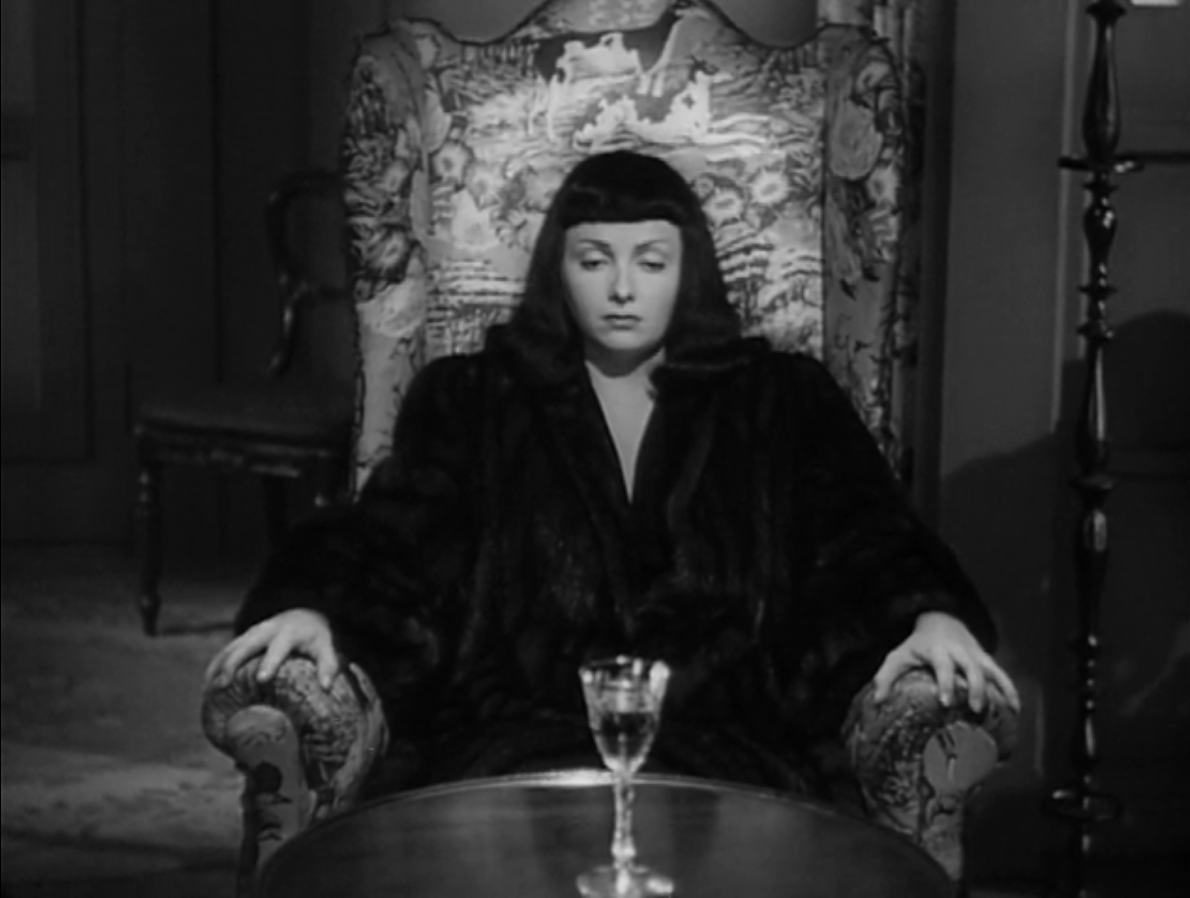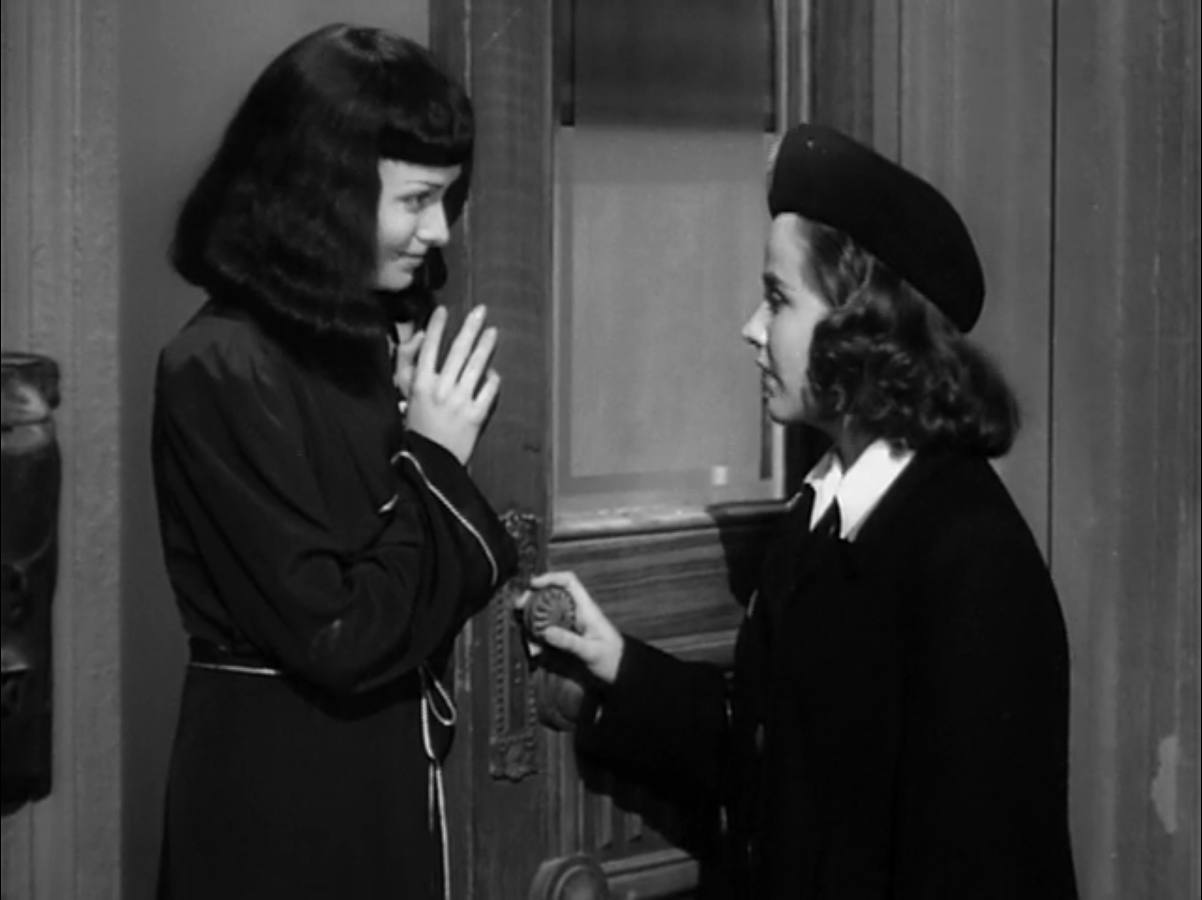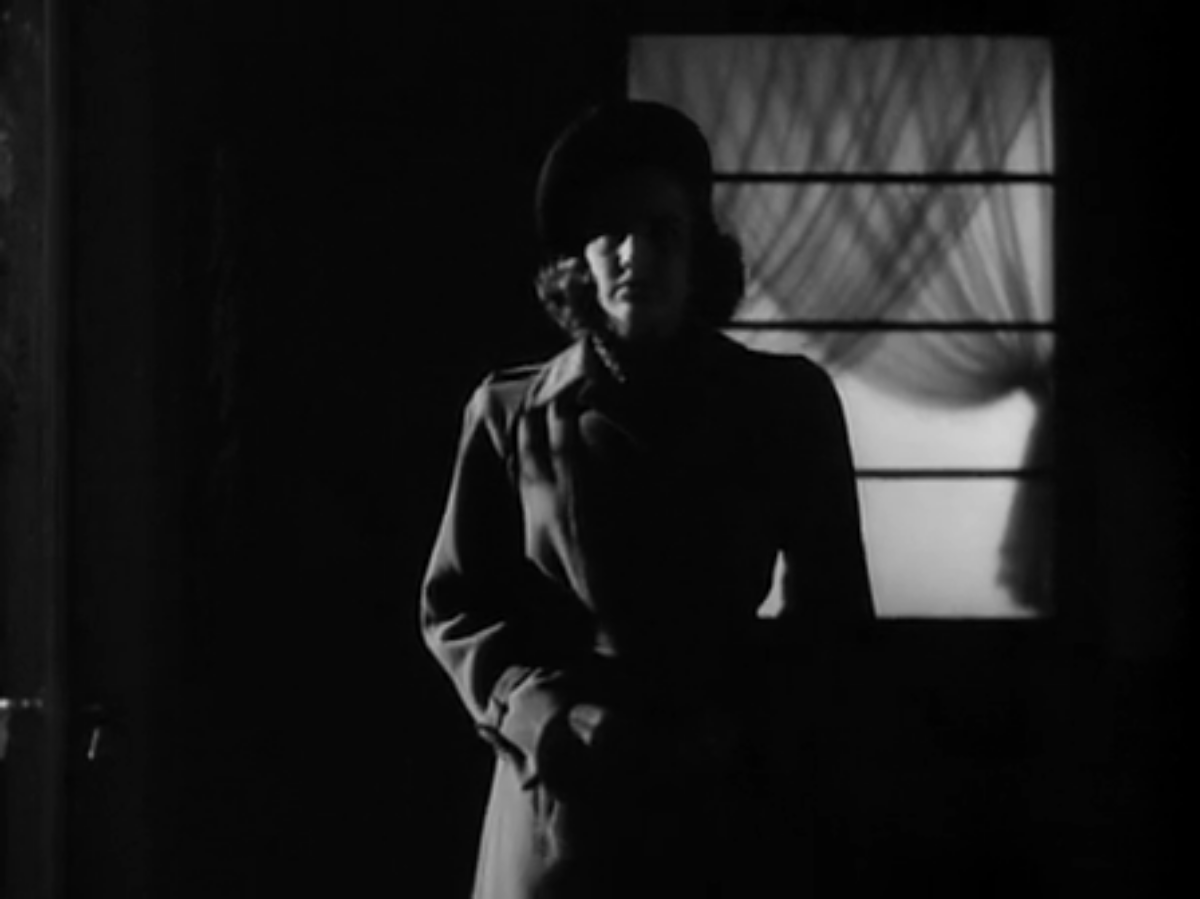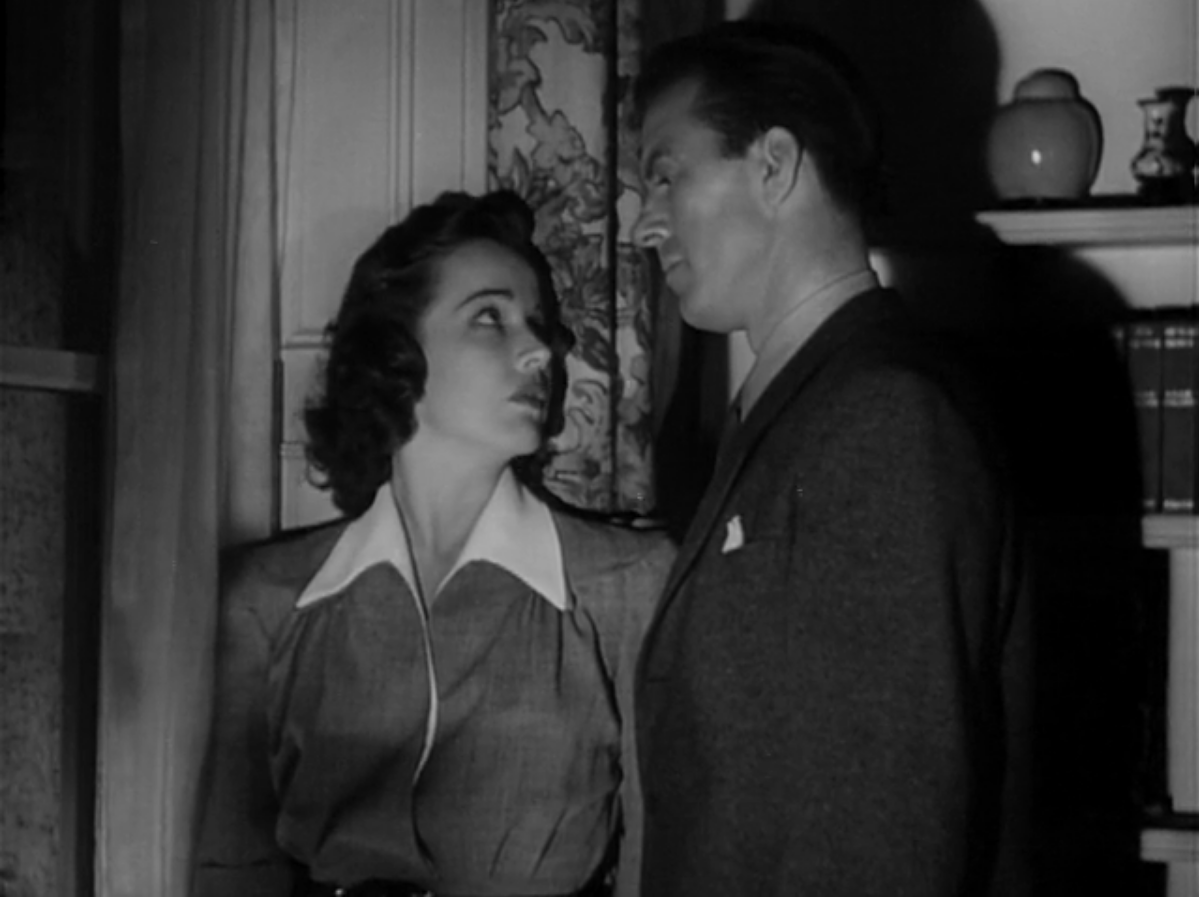Sisters | The Seventh Victim
Setting out, shuffling off.
I’ve been rather obsessed with Val Lewton’s movies for a long time, and The Seventh Victim (1943) is my favorite. In anticipation of Cinematic Void’s screening of a Library of Congress-sourced 35mm print of the The Seventh Victim this Monday (6/6/22) in Los Angeles, I put together this piece on the film, and I’m dropping it early so you can read it before the screening if you care to.
Films discussed: Mainly the Seventh Victim (1943), with light spoilers, and a bit on Val Lewton's films for RKO.
Content warning: Suicide.
The dominant figure in our cultural memory of Mark Robson’s The Seventh Victim (1943) is undoubtedly Jacqueline Gibson (Jean Brooks). She’s the image you see advertising a repertory screening or placed alongside a write-up of the film, and she’s the character that lingers in your mind after the credits roll. This is true even though she is not the film’s protagonist and even though she spends most of the movie off screen. There’s something of The Third Man’s Harry Lime in Jacqueline: everyone’s looking for her, the film is in many ways about her, and her absence only makes us want to see her more. When we first get a glimpse of Jacqueline at minute thirty, it only deepens her aura of mystery: she’s at the door, raises a finger to her lips cautioning quiet—then she’s spooked, shutting the door and disappearing once again. We don’t even hear her voice. We won’t hear her voice or see her again until much later in the film. Nevertheless, it’s her movie.
The most noir of producer Val Lewton’s legendary run of RKO horror movies, and the first directorial effort by Mark Robson (after editing Lewton’s first three at RKO), it fits neatly into the Lewton filmography, returning to the New York City of Cat People and making moody, literate, gripping horror on a low budget. But while it has its Lewton-signature scares-in-the-shadows-not-on-the-screen moments, it isn’t a film you’d watch to study suspense. The effect it most relies on, the thing that gives it its indelible, palpable power, is the figure of Jacqueline herself.

With her fur coat and dark bangs (she had Bettie Page hair before Bettie Page), Jacqueline cuts quite the striking figure. And her captivating vibe and beauty are absolutely insisted upon by everyone who’s met her. Her sister Mary (Kim Hunter in her first film, four years before her turn as Stella in the original cast of Streetcar), whose search for Jacqueline is the focus of the film, says, “Once you’d seen my sister you’d never forget her.” It’s a sentiment shared by Jacqueline’s friend and former employee Francis: “Anybody who ever sees her never forgets her.” As Jacqueline’s husband Gregory says, “A man would look for her anywhere . . . . There’s something exciting and unforgettable about Jacqueline, something you never quite get hold of. Something that keeps a man following after her.” It’s more, really, than can be explained by her looks alone.
It’s the character and Jean Brooks's portrayal that sell it. The sisters in The Seventh Victim don’t have character arcs so much as fixed, inevitable directions—and Jacqueline’s headed out of her life entirely. She’s obsessed with death. She keeps a room in Greenwich Village that’s empty but for a chair below a hanging noose. “I’ve always wanted to die,” she says, “Always.” She demands more from life than it's generally willing to concede. Dr. Louis Judd (Tom Conway, reprising his role from Cat People) describes her as a “sensationalist.” She mixes herself up, ultimately unhappily, with a secret society. Jacqueline’s on her own, dark, vaguely countercultural wavelength. Together with the fur coat, the hair, the large, shining eyes, she’d probably have made a proto-goth icon if The Seventh Victim had ever gained more of a following.

When we finally meet Jacqueline, after hearing so much about her, Jean Brooks inhabits her with a convincingly unusual energy. She’s frightened, yes (she’s being hunted, you see, by Devil worshippers), but her expressive, slightly harsh voice conveys a jaded, world-weary perspective that suits a woman obsessed with suicide. Like any good countercultural icon, she's determined to do things on her own terms. While she may want to die, she doesn’t want to be killed. Brooks convinces us that, even if she’s tired of it all, she’ll still inhabit her skin with a determined integrity until the end.

Jacqueline makes a stark contrast with her sister Mary. It’s the contrast between the two sisters, and the different directions they’re heading, that gives The Seventh Victim much of its depth. Kim Hunter’s Mary plays the ingenue, a fresh arrival in New York, radiating sincerity, goodness, and innocence. There’s a steeliness to her though, something we pick up pretty early. She doggedly follows her sister’s tracks around New York, whether to the Missing Persons Bureau or to the morgue. Hers is a strength that can be quite gratifying to watch. When Jacqueline’s husband Gregory responds to her remorse over getting someone hurt with a paternalistic “Drink your milk,” she responds, “I don’t like to be ordered to do anything.” When he apologizes for treating her “like a child,” she responds, “But you have treated me that way.” She’s an innocent in the city, but she’s not one to push around.
This has its less appealing side too. In one scene we find Mary and Irving August, a private detective, staring down a hallway. It's the type of minimalist horror set-up we expect in Val Lewton movies—suspense generated from simple elements, here just the sound of a ticking clock and the long hallway stretching into darkness. They’re both frightened. Mary wants to check the room at the end of the hall for her sister. Irving suggests, quite reasonably, that they go. “No,” Mary says, “You could go on Mr. August. You could open the door. I’d stay right here. It’s only a little way, Mr. August.” When he doesn’t go, she pushes again. “You could go and open the door.” And she watches him go, alone, into the dark. She’ll have her way, whether he’s comfortable with it or not.

It’s her darkest moment but not the darkest aspect of her presence in the film. For while her good intentions are never in doubt, she isn’t simply looking for Jacqueline in New York, she’s also pursuing her own agenda.* At the beginning of the film, when she’s first heard of her sister’s disappearance, and she’s preparing to leave school, she’s warned by a faculty member, Miss Gilchrist, “Don’t come back . . . . I left as you are leaving. But I didn’t have courage. One must have courage to really live in the world. I came back.” And she seems to have taken this advice—to go out and make something of her life—to heart. While looking for her sister, she also moves from a hotel into an apartment. She gets a job. She finds a love interest (two really). She’s establishing herself in the city.
There’s nothing wrong with this, of course—she wouldn’t be the first person to follow her cooler, older sibling to the city—but it all takes on a different tone when we consider that the apartment she finds is in her sister’s neighborhood (down the hall from that room with the noose) and the love interest is, in fact, her sister’s husband. Jacqueline's fixated on death, but she's not gone yet. Nevertheless, Mary's building something new atop the fading remnants of her sister's life. Mary is, unwittingly, displacing Jacqueline. And indeed, the two women seem to inhabit entirely different worlds. Can we imagine them both living happily in the same New York City?

The Seventh Victim revolves around a secret society of Devil worshippers, and the dark aura of Satanism imbues the film with much of its horror movie appeal (and menace). But it’s a film that’s always more interested in the human than the supernatural, presenting Devil worship as dangerous, but never taking it seriously as a source of supernatural power (something done quite effectively elsewhere). The secret society (the “Palladists”) is ultimately something of joke. The serious treatment is reserved, not for satanic forces, but for death itself. And, naturally, for life.
The contrast between the two sisters is most distinct in their differing postures toward death: one sister’s intent on living and the other’s intent on dying. Mary’s building a life in New York, while Jacqueline’s keeping a suicide room at the ready. But they offer, as well, contrasting ways of living. When Mary talks to Gregory after discovering the noose, he tries to explain it to her from Jacqueline's perspective. “Your sister had a feeling about life, that it wasn’t worth living unless one could end it,” he tells her. “. . . [T]hat room made her happy in some strange way I couldn’t understand.” Jacqueline’s love affair with death is its own distinct way of living. A Palladist points out the seeming contradiction in her fight for her life: “. . . [Y]ou were always talking suicide, of ending your life when you wanted to.” Her reply illuminates her style of living: “Yes, when I wanted to.” Jacqueline longs for death, but not today, not because it's demanded of her—she'll keep on, with her living eyes fixed on her final end. Everything that distinguishes her life—her unique aura, the impression she makes on the world—arises out of her dance with death. Mary may serve as a quite sensible, if subtly destructive, example of standard, wholesome living—but Jacqueline's not suicidal in a simple, sad way. She offers a kind of fringe, countercultural—and yes, dark and potentially horrible—approach to living, wearing her mortality lightly, prizing freedom and sensation over existence itself.
*If this account of Mary’s role in The Seventh Victim sounds familiar, it’s an update of an argument I made in a Twitter thread a long time ago.
Horror writing elsewhere:
There's a new Cronenberg in theaters and this interview with Viggo Mortensen and Léa Seydoux sheds some light on Cronenberg as a director of actors and on the experience of working on his set. A nice amuse-bouche before heading to the cinema to see Crimes of the Future.
Dead of Night has no publication schedule. Sign up to receive new essays about horror cinema in your email inbox.